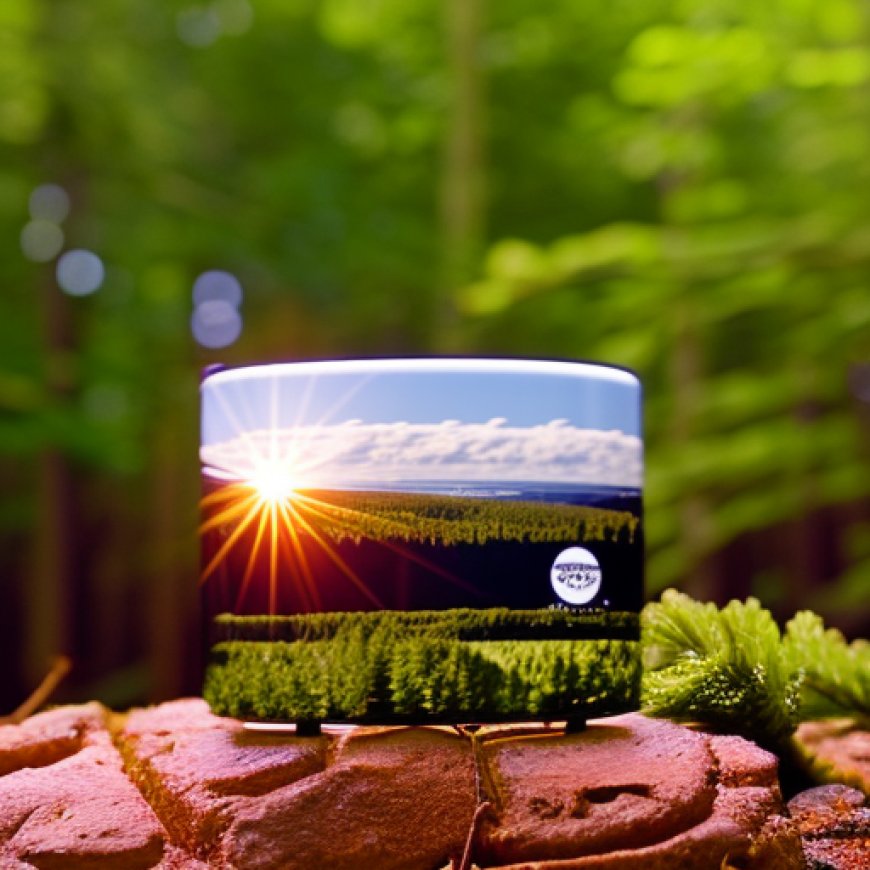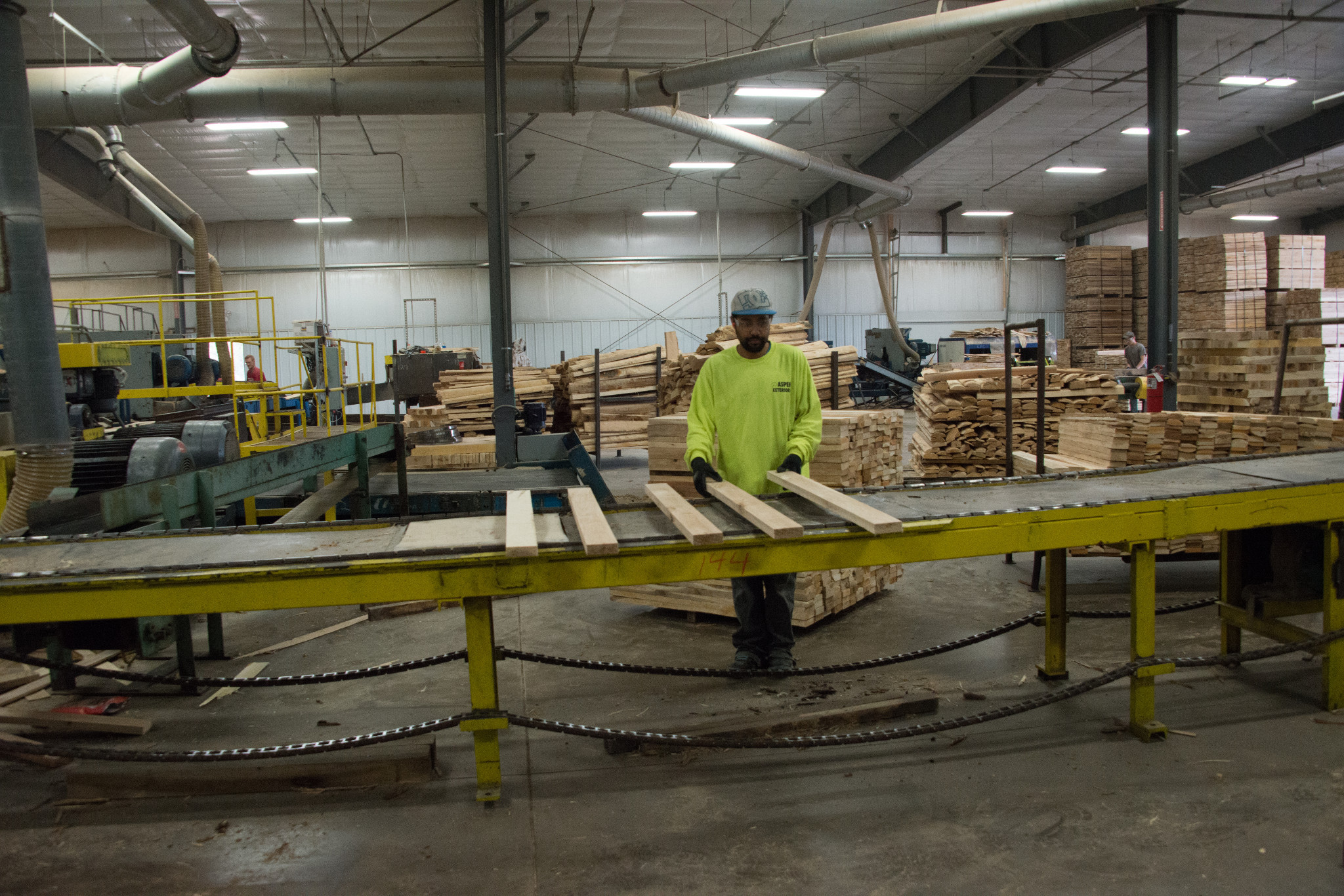Celebrate Wisconsin Forest Products During National Forest Products Week | Wisconsin DNR
Celebrate Wisconsin Forest Products During National Forest ... Wisconsin DNR


MADISON, Wis. – The Wisconsin Department of Natural Resources (DNR) Celebrates National Forest Products Week

The Wisconsin Department of Natural Resources (DNR) is joining a national celebration of forest products this week. National Forest Products Week (Oct. 15-21, 2023) highlights the value of forest products, their many contributions to society, and the vital role they play in our daily lives.
Importance of Forests in Wisconsin
Many Wisconsinites appreciate that forests are an essential part of our state’s history, culture, and environment, but fewer people realize the economic impact of the 17 million acres of forests in Wisconsin.
Just like how Wisconsin’s diverse forests keep our ecosystems healthy, our diverse forest industry produces a unique and wide range of products; from cardboard boxes and high-quality paper to doors, windows, and flooring, to many lesser-known products that support a healthy economy and keep Wisconsin competitive globally.
Economic Impact of Forest Products
“Forest products generate more than $24 billion in goods and services annually,” said Carmen Hardin, DNR Applied Forestry Bureau Director. “The economic impact reaches every corner of the state. Not only is forestry the number one employer in eight Wisconsin counties, but every 100 forestry jobs support another 124 jobs in the state.”
Recognition and Sustainable Development Goals
As part of this celebration of forest products, the DNR recognizes the industry workers who make the products, the forestry professionals who are hard at work keeping forests healthy and resilient, and the individuals and families who own nearly 60% of the forest land in Wisconsin and provide about 65% of the wood needed by forest product companies in Wisconsin.
Carbon sequestration in sustainably managed forest lands and carbon storage in the products made from the trees can provide a natural solution to climate change while also providing a variety of additional benefits like clean air and water, human health benefits, recreational opportunities, wildlife habitat, good-paying jobs, and local economic support. Not only does the carbon remain sequestered throughout the forest product’s lifetime, but forest products are less carbon-intensive to produce than other materials.
“In addition to helping mitigate climate change, forests are the backbone of our environment and critical to our economic prosperity,” said Hardin. “Perhaps the best thing about forest products is that they are recyclable and come from a renewable resource. That’s surely worth celebrating.”
Celebrating Forest Products
This week-long celebration of forest products has been observed across the nation since 1960. Learn more about Wisconsin forest product businesses on the DNR’s Forest Businesses webpage. Learn about the USDA Forest Products Laboratory’s celebration of National Forest Products Week on the USDA website.
SDGs, Targets, and Indicators
| SDGs | Targets | Indicators |
|---|---|---|
| SDG 8: Decent Work and Economic Growth | Target 8.3: Promote development-oriented policies that support productive activities, decent job creation, entrepreneurship, creativity, and innovation. | – Economic impact of forest products in Wisconsin, generating more than $24 billion in goods and services annually. – Forestry as the number one employer in eight Wisconsin counties. – Every 100 forestry jobs supporting another 124 jobs in the state. |
| SDG 13: Climate Action | Target 13.2: Integrate climate change measures into national policies, strategies, and planning. | – Carbon sequestration in sustainably managed forest lands and carbon storage in forest products as a natural solution to climate change. – Forest products being less carbon-intensive to produce than other materials. |
| SDG 15: Life on Land | Target 15.2: Promote the implementation of sustainable management of all types of forests. | – Forest industry workers and forestry professionals working to keep forests healthy and resilient. – Individuals and families owning nearly 60% of the forest land in Wisconsin and providing about 65% of the wood needed by forest product companies. |
1. Which SDGs are addressed or connected to the issues highlighted in the article?
SDG 8: Decent Work and Economic Growth
The article highlights the economic impact of forest products in Wisconsin, generating more than $24 billion in goods and services annually. It also mentions forestry as the number one employer in eight Wisconsin counties and how every 100 forestry jobs support another 124 jobs in the state.
SDG 13: Climate Action
The article discusses the role of forests and forest products in carbon sequestration and storage as a natural solution to climate change. It also mentions that forest products are less carbon-intensive to produce than other materials.
SDG 15: Life on Land
The article recognizes the individuals and families who own nearly 60% of the forest land in Wisconsin and provide about 65% of the wood needed by forest product companies. It also acknowledges the efforts of industry workers and forestry professionals in keeping forests healthy and resilient.
2. What specific targets under those SDGs can be identified based on the article’s content?
Target 8.3: Promote development-oriented policies that support productive activities, decent job creation, entrepreneurship, creativity, and innovation.
The economic impact of forest products in Wisconsin, generating more than $24 billion in goods and services annually, highlights the promotion of productive activities and decent job creation in the forest industry.
Target 13.2: Integrate climate change measures into national policies, strategies, and planning.
The article emphasizes the role of forests and forest products in carbon sequestration and storage as a natural solution to climate change, indicating the integration of climate change measures into forest-related policies and planning.
Target 15.2: Promote the implementation of sustainable management of all types of forests.
The recognition of individuals and families owning a significant portion of forest land in Wisconsin and their contribution to the wood supply for forest product companies highlights the promotion of sustainable management of forests.
3. Are there any indicators mentioned or implied in the article that can be used to measure progress towards the identified targets?
The article provides indicators that can be used to measure progress towards the identified targets:
– Economic impact of forest products in Wisconsin, generating more than $24 billion in goods and services annually.
– Forestry as the number one employer in eight Wisconsin counties.
– Every 100 forestry jobs supporting another 124 jobs in the state.
– Carbon sequestration in sustainably managed forest lands and carbon storage in forest products as a natural solution to climate change.
– Forest products being less carbon-intensive to produce than other materials.
– Individuals and families owning nearly 60% of the forest land in Wisconsin and providing about 65% of the wood needed by forest product companies.
These indicators can be used to assess the progress in promoting productive activities, decent job creation, sustainable forest management, and climate change integration in forest-related policies and planning.
4. SDGs, Targets, and Indicators
| SDGs | Targets | Indicators |
|---|---|---|
| SDG 8: Decent Work and Economic Growth | Target 8.3: Promote development-oriented policies that support productive activities, decent job creation, entrepreneurship, creativity, and innovation. | – Economic impact of forest products in Wisconsin, generating more than $24 billion in goods and services annually. – Forestry as the number one employer in eight Wisconsin counties. – Every 100 forestry jobs support another 124 jobs in the state. |
| SDG 13: Climate Action | Target 13.2: Integrate climate change measures into national policies, strategies, and planning. | – Carbon sequestration in sustainably managed forest lands and carbon storage in forest products as a natural solution to climate change. – Forest products being less carbon-intensive to produce than other materials. |
| SDG 15: Life on Land | Target 15.2: Promote the implementation of sustainable management of all types of forests. | – Forest industry workers and forestry professionals working to keep forests healthy and resilient. – Individuals and families owning nearly 60% of the forest land in Wisconsin and providing about 65% of the wood needed by forest product companies. |
Behold! This splendid article springs forth from the wellspring of knowledge, shaped by a wondrous proprietary AI technology that delved into a vast ocean of data, illuminating the path towards the Sustainable Development Goals. Remember that all rights are reserved by SDG Investors LLC, empowering us to champion progress together.
Source: dnr.wisconsin.gov

Join us, as fellow seekers of change, on a transformative journey at https://sdgtalks.ai/welcome, where you can become a member and actively contribute to shaping a brighter future.







